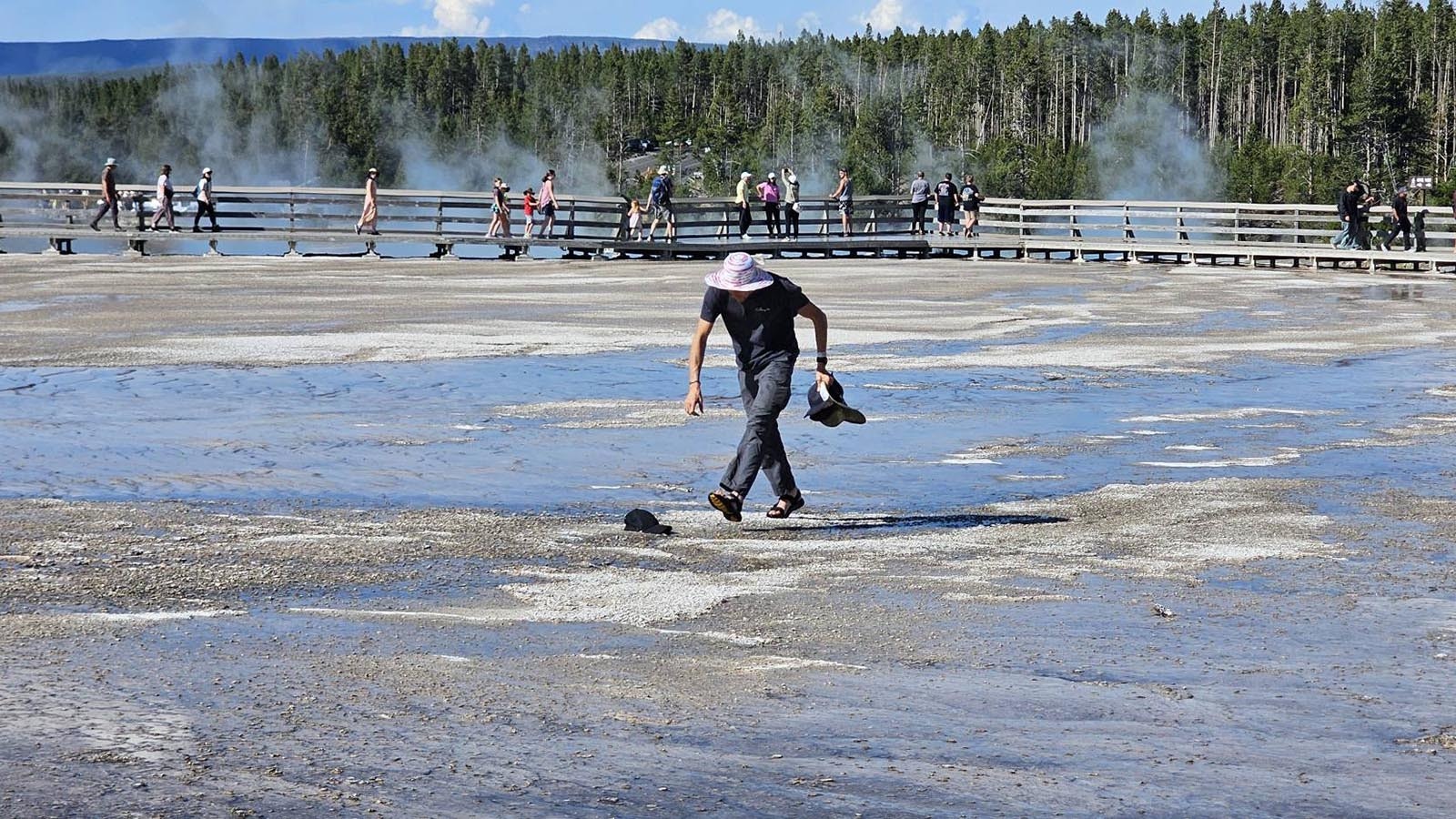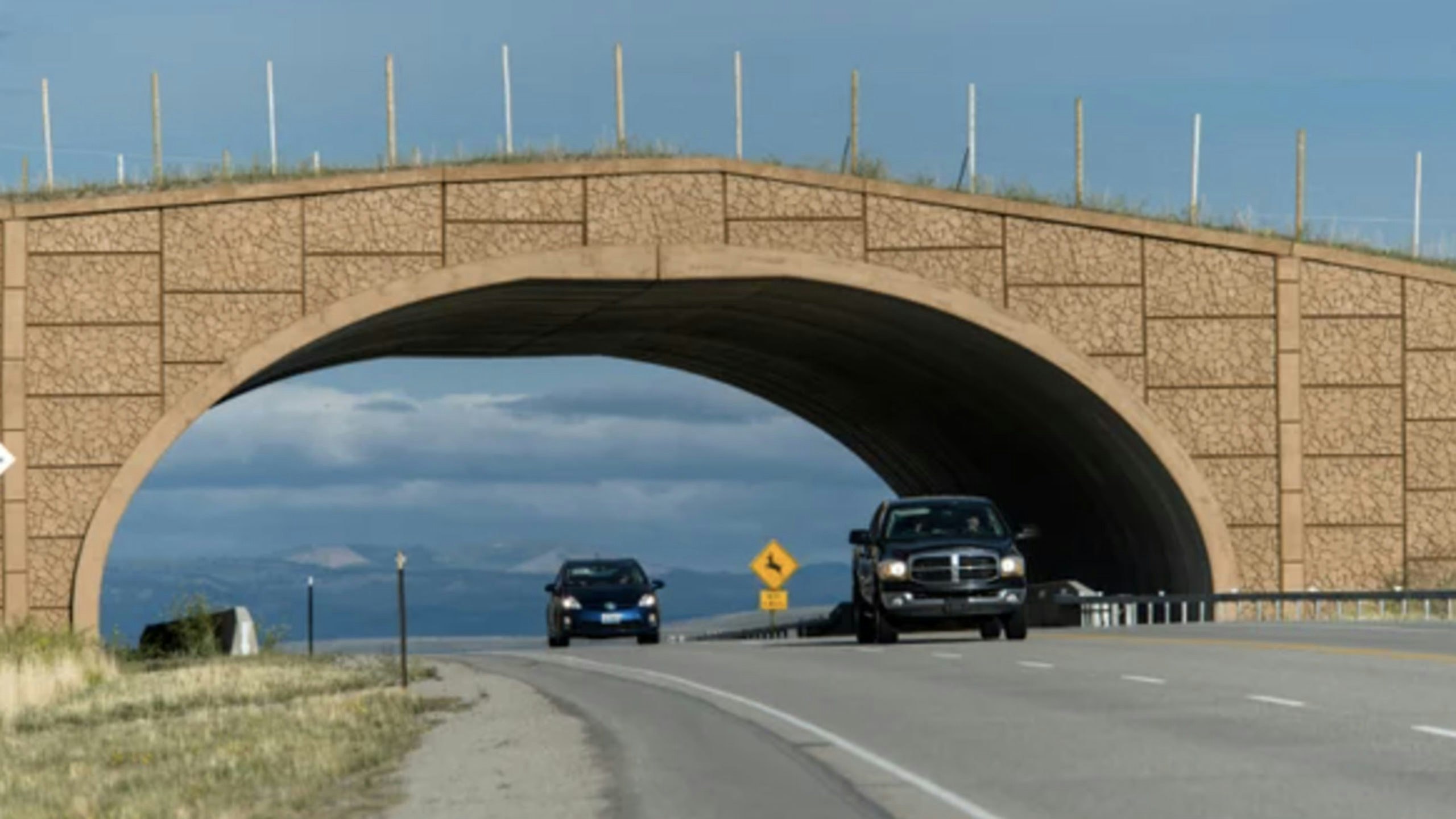Lead-footed drivers have taken a toll on grizzlies in and near Grand Teton National Park, and “sad bear” roadside signs, tugging on their heartstrings, might be the best way to get them to slow down.
“These signs are focused on things that actually trigger your responses,” Paul Lukacs, a professor with the University of Montana’s wildlife biology program, told Cowboy State Daily.
“They make you feel empathetic to the animals and think about the situation,” he added.
One of the most effective signs features an image of a forlorn-looking grizzly cub with the message: “Slow down. When a cub dies our community mourns.”
Researchers concluded that the signs reduced speeding by as much as 35% during test runs alongside highways in Grand Teton and along other wildlife corridors in northwest Wyoming.
Traffic along those roads is a hazard for grizzlies. Between 2009 and 2023, 51 bears were struck by vehicles and killed in that region — according to research led by the University of Montana (UM) and funded through Joe Rickett’s Jackson Fork Ranch, which is near Bondurant.
In October 2024, Wyoming’s most famous bear, Grizzly 399, was struck and killed by a vehicle south of Jackson.
And in May, one of her grown male offspring, Grizzly 1058, was hit and killed in Grand Teton.
A Psychological Appeal That Works
Renowned wildlife biologist Doug Smith said at first, he was skeptical that road signs could help save bears and other wildlife.
Smith led Yellowstone National Park’s wolf program for more than 30 years and is now the chief biologist on the Jackson Fork Ranch.
According to conversations that Smith had with state and county road and highway department officials, drivers ignore roadside caution signs, he said.
“People concluded that they (signs) don’t work. People kind of tune them out,” Smith said. “Getting people’s attention is a futile exercise.”
But then he saw the results of the UM/Jackson Fork Ranch Study and was impressed.
“This was right on the money, they got results,” he said.

Sad Images, Bright Colors Effective
Lukacs said the primary research method was simple and straightforward.
Radar speed detectors set up near the signs recorded the speed of passing vehicles. Then, researchers looked at the numbers, to see how many speeding drivers dropped to, or even below the speed limit after passing the signs, he said.
They used the results to determine which signs were most effective, Lukacs said.
The “sad bear” sign was a winner, reducing the odds of speeding by 35%, according to the research.
Bright colors also seemed to help.
Another successful design features an image of a mother grizzly with a small cub following her, against a garish yellow background. “Cub Crossing Ahead” appears in bright red lettering across the top of the sign. Under that, in large, bold, black lettering is the message: “Entering Bear Corridor.”

A Cheaper Alternative To Wildlife Crossings
Traffic has always been a threat to wildlife in the Grand Teton/Yellowstone area, Smith said.
One spot, right on the line between Yellowstone park and the Custer-Gallatin National Forest Near West Yellowstone, Montana is particularly bad, he said.
“Highway 91, mile marker 30” is that site where 12 wolves were hit over a 20-year period when he was working in Yellowstone, Smith said.
And numerous other wild animals have been struck there too, he added.
“There’s been talk for years” about putting a wildlife crossing there, Smith said.
Wildlife crossings – either overpasses or underpasses that allow safe passage for critters of all sizes — are popular and effective.
But the trouble is, they also take years to plan and build. And they are expensive, frequently costing in the $20 million to $30 million range.
And lately, there’s been concern over federal grants for wildlife crossings being put on indefinite hold.
Smith said the “sad bear” sign research project gives him hope for an alternative, or a supplement, to wildlife crossings that could help save wildlife, as traffic in and around the national parks continues to increase.
“I think it (the sign program) needs to be expanded” to other areas, and to include other species, Smith said.
So, perhaps images of worried moose, despondent wolves and heartbroken deer could be next?
Regardless of what direction the sign project takes, the “creative messaging” the researchers employed seems to have cracked the code to grabbing drivers’ attention and getting them to let off the gas, Smith said.
Mark Heinz can be reached at mark@cowboystatedaily.com.





